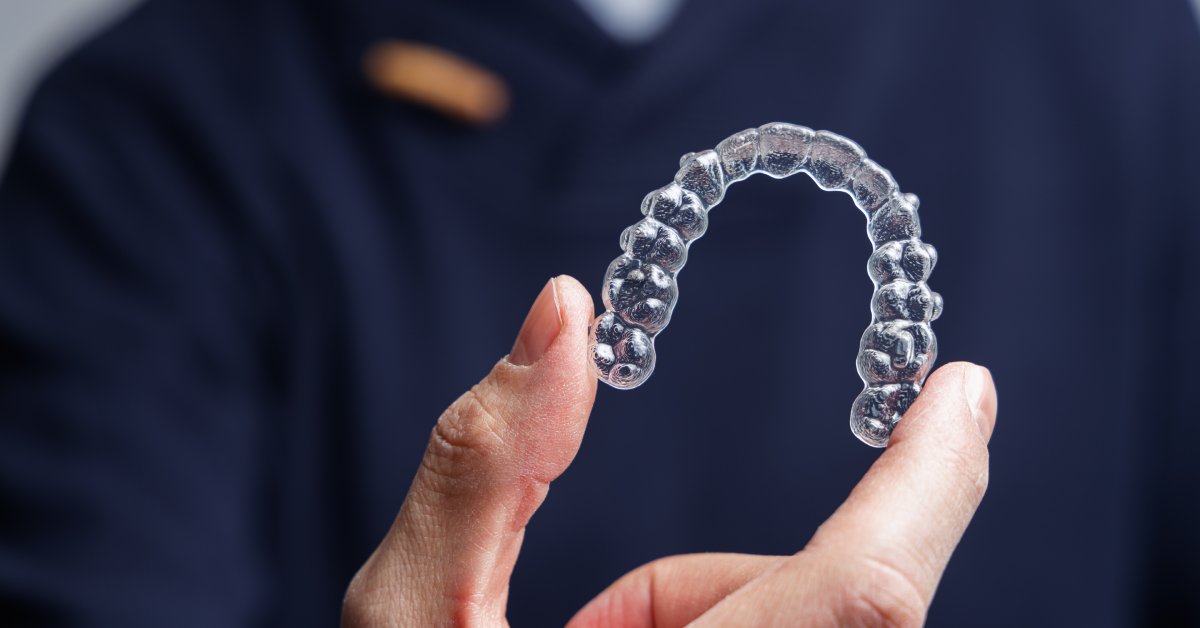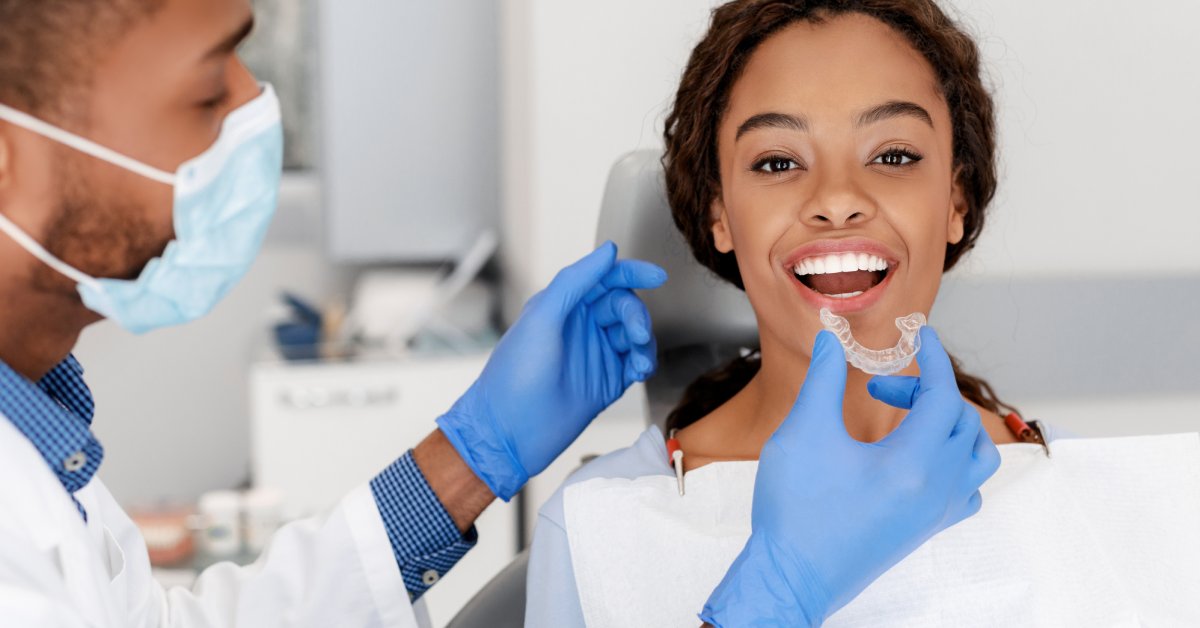
Straightening your teeth has never been simpler, thanks to clear aligners. These discreet and comfortable trays are becoming a popular alternative to traditional metal braces.
However, like any dental tool, they require proper care to provide effective treatment and maintain oral health. Whether you’re just starting with aligners or want to refine your care routine, these hygiene tips for how to care for teeth straightening aligners will walk you through everything needed to maintain your aligners.
Proper Care for Aligners
Clear aligners rely on accuracy and consistent use to gradually shift your teeth into alignment. Any compromise in cleanliness or structure can reduce their effectiveness and negatively impact your oral health.
Dirty aligners can trap bacteria against your teeth and gums, leading to bad breath, plaque buildup, and even cavities. Proper care not only prolongs the life of your aligners but also guarantees that your treatment progresses as planned, letting you flash that perfect smile sooner rather than later.
Daily Cleaning Routine
Keeping a daily cleaning routine is key to your aligners staying in perfect condition. Clean them every morning before putting them in and every evening when taking them out for the night. Start by rinsing them gently under lukewarm running water to remove surface debris.
Afterward, use a soft-bristled toothbrush and a mild, non-abrasive soap to scrub both sides of the trays. Avoid using toothpaste, as it can scratch the aligners, making it harder to get rid of bacteria. Once clean, rinse thoroughly with water and make sure there’s no soap residue left.
What You Should Avoid
While cleaning your aligners is vital, avoid cleaning practices that could damage them. Never use hot water, as it can cause the plastic to warp and compromise the fit.

Avoid harsh chemicals, such as bleach or alcohol-based cleaners, that can degrade the material and render it unsafe for use. Additionally, steer clear of abrasive scrubbing tools, such as stiff brushes or steel wool, as they can scratch the aligners, creating small crevices where bacteria can hide.
How to Store Your Aligners
Proper storage is imperative for preventing damage or contamination when your aligners aren’t in use. Always place your aligners in their designated case when you remove them for meals or snacks.
Leaving them exposed on tables or countertops increases the risk of contamination, as well as the possibility of accidental damage. Aligner cases are designed to keep your trays clean and safe, assuring they’re ready to use when you put them back in.
Oral Hygiene and Aligner Care
Caring for your teeth is just as important as caring for your aligners. Plaque and bacteria buildup can easily transfer from your teeth to your aligners if oral hygiene is neglected. Brush your teeth after every meal and snack before reinserting your aligners.
Floss daily to remove debris between teeth, and consider using an alcohol-free mouthwash to rinse away any lingering particles. This dual care routine is necessary for maintaining both your oral health and the clarity of your aligners.
Signs of Poor Aligner Hygiene
Recognize when your aligner hygiene may need improvement to prevent potential issues. Common signs include persistent bad breath, cloudiness on the aligners, or visible buildup along the trays. If you notice discoloration or a foul odor despite regular cleaning, it may indicate inadequate cleaning practices or missed maintenance routines.
Additionally, gum irritation or soreness may signal bacteria accumulation. Address these issues promptly by revisiting your cleaning methods and using aligner-safe cleaning solutions. Pay attention to changes in your aligners or oral health and adjust your care routine as needed to maintain treatment effectiveness.
Cleaning Products for Aligners
Using the right cleaning products is crucial to keeping your aligners clear and odor-free. A soft-bristled toothbrush paired with mild soap is a reliable method for daily cleaning.
For a deeper clean, consider using specialized aligner cleaning solutions, such as cleaning crystals or tablets. These are designed to break down tough stains and eliminate bacteria without damaging the trays. Always follow the product instructions for the best results.

How to Handle Stains and Discoloration
Aligners are clear for a reason—to stay discreet. Over time, however, they may stain or become discolored due to improper cleaning or exposure to certain foods and drinks. If your aligners develop stains, soak them in an aligner-cleaning solution.
Avoid using baking soda, toothpaste, or other abrasive agents on colored stains, as these can scratch the surface. Regular cleaning and avoiding stain-causing substances, such as coffee, tea, and red wine, can help maintain their transparency.
Eating and Drinking with Aligners
One of the most common mistakes made by aligner users is eating or drinking while wearing them. Always remove your aligners during meals and when consuming anything other than water.
Food particles can get trapped between your teeth and the aligners, increasing the risk of cavities and odors. Beverages like coffee, tea, and wine can stain your aligners, while sugary or acidic drinks can lead to enamel erosion. Stick to water while wearing aligners to keep them clean and maintain your teeth’s health.
Traveling with Aligners
Traveling with aligners is possible with a little extra planning. Always pack your aligner case to store them safely during meals. Bring travel-sized versions of your cleaning essentials, such as a small toothbrush and soap or aligner cleaners.
If you’re flying, keep your aligners in your carry-on luggage to avoid mishaps with lost bags. Stick to your regular cleaning and wear schedule, even when you’re on the move.
When to Replace Your Aligners
Monitoring the condition of your aligners is important for achieving effective treatment. Replace your aligners as instructed by your orthodontist, typically every one to two weeks.
Signs of damage, such as cracks, warping, or improper fit, should prompt you to contact your orthodontist immediately. Avoid attempting to repair damaged aligners yourself, as this can result in worse treatment. Remember, your orthodontist is there to ensure your progress stays on track.
Take Charge of Your Smile
Proper care for your teeth straightening aligners isn’t just a hygiene routine but rather a commitment to yourself and your smile. By incorporating these hygiene tips for how to care for teeth straightening aligners, you’ll optimize your treatment plan.
Proper cleaning, maintaining excellent oral health, and keeping your aligners discreet and odor-free are all important aspects of your routine. Diligent oral hygiene and timely communication with your orthodontist will guarantee a flawless and more successful straightening experience.
If you want to improve your smile and are considering teeth straightening services, schedule an appointment with Pinnacle Dental Associates. Our experts are here to help you every step of the way toward achieving the smile of your dreams.
